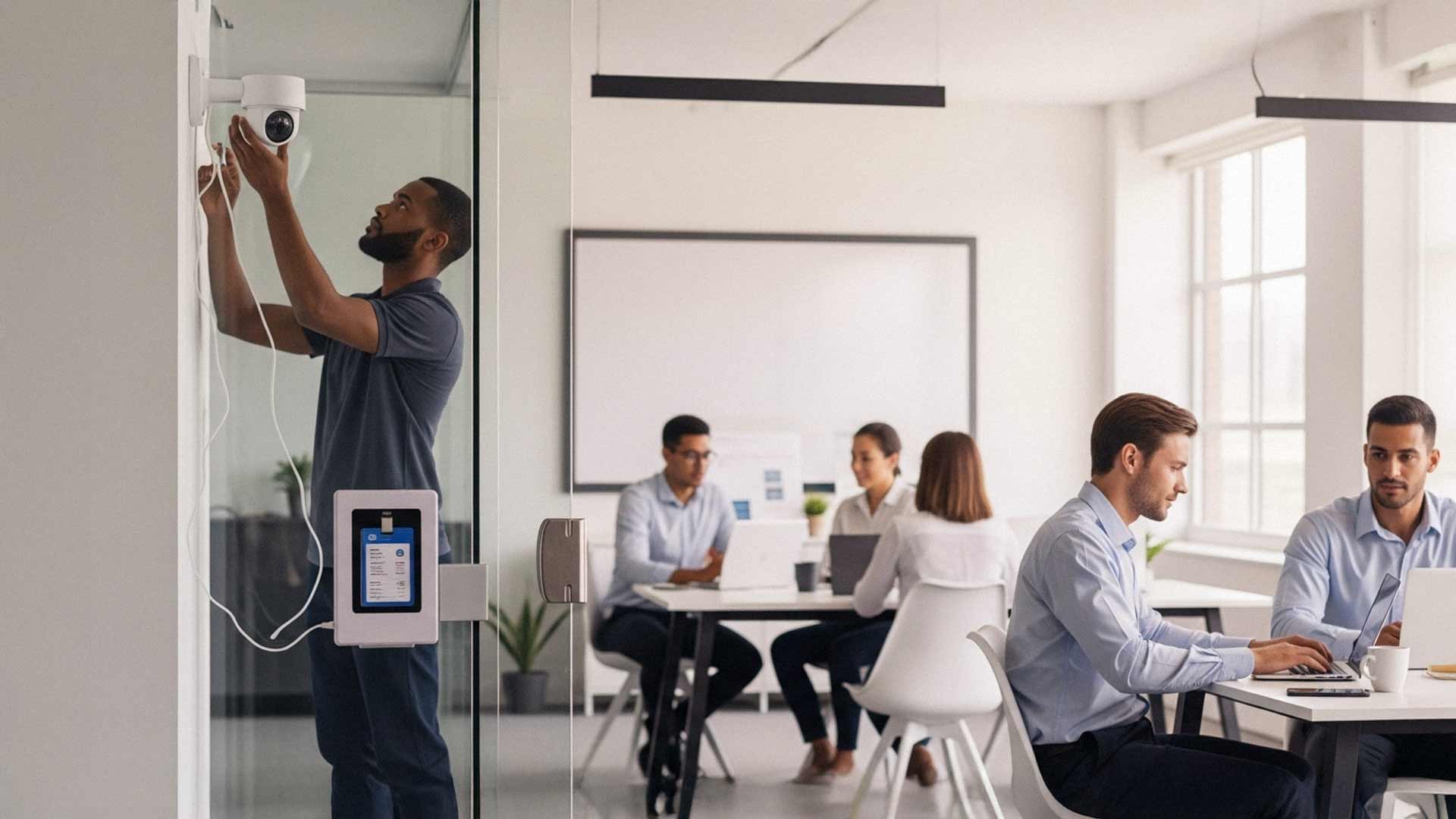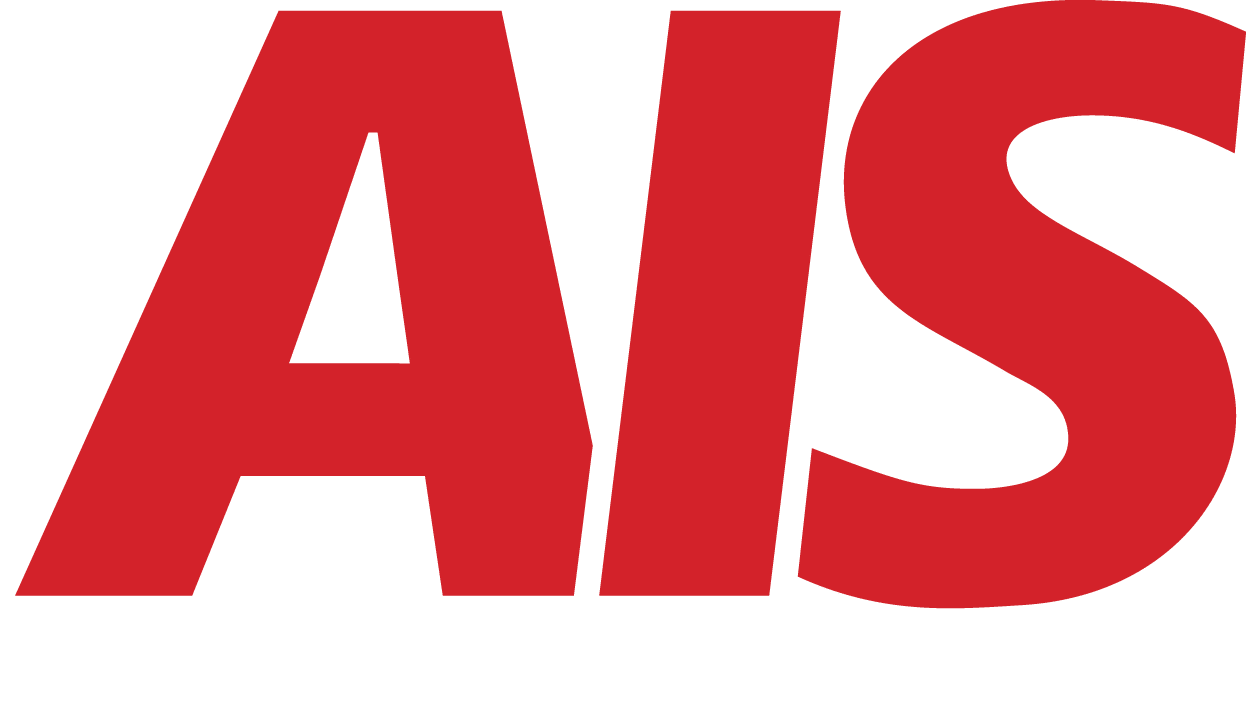How to Implement Business Security Systems Without Disrupting Staff
July 30th, 2025 | 5 min. read

Security upgrades are wise and necessary, but they can come with an unintended side effect: staff frustration.
Maybe you are adding surveillance cameras. Perhaps you are rolling out badge-based access control or a new alarm system.
All of these tools help protect your people, data, and property. However, if they are installed or rolled out poorly, they can disrupt workflows, harm morale, or even lead to pushback from your team.
The good news is that none of that is necessary. With the proper planning and communication, you can implement a modern security system without disrupting your staff or slowing down your business.
In this article, we will show you how to introduce security upgrades in a way that is smooth, respectful, and well-received by the people who work there every day.
Why Businesses Hesitate to Upgrade Security Systems
1. Staff pushback or productivity concerns
Many business owners worry that security systems will make work more difficult. They picture frustrated employees waiting at locked doors or confused by new procedures.
That hesitation is understandable. But with the right systems and rollout strategy, those problems can be avoided.
2. Fear of looking like you don’t trust employees
This one comes up a lot. No one wants to send the message that they are watching their team or treating the office like a fortress. But the reality is, modern security tools are more about safety, compliance, and risk prevention, not policing people.
3. Assumptions that installation will slow everything down
Some businesses put off upgrades because they think installation means shutting down parts of the office or bringing in a crew that interrupts daily work. While installation can take coordination, most experienced providers know how to minimize disruption.
What Causes Security System Rollouts to Disrupt Workflows?
Poor communication or no staff notice
One of the biggest mistakes businesses make is springing a new system on their team without any notice. Even if the system is excellent, people do not like surprises, especially ones that affect their routines.
A simple heads-up and explanation go a long way.
Overly complex access rules or badge systems
If it takes ten minutes to get into the building or log in to a system, people will get frustrated. Too many restrictions or poor planning around access roles can make even a sound system feel like a hassle.
Inconvenient installation times or blocked workspaces
Installing cameras, wiring alarms, or mounting access panels in the middle of the workday can disrupt meetings or daily operations. Installing after hours or in phases can prevent these headaches.
Systems that aren’t user-friendly or well-integrated
A security system that does not connect with your existing tools, directories, or workflows will cause unnecessary friction. The best systems fit into your environment without forcing people to change the way they work.
How to Roll Out a New Security System Smoothly
Involve team leaders early in the planning process
Before installation begins, bring department heads or office managers into the conversation. They can help identify high-traffic areas, suggest optimal installation times, and spot any red flags you might miss.
This also gives them a sense of ownership and allows them to explain the changes to their teams with confidence.
Communicate the “why” behind security upgrades
People are far more likely to support new systems when they understand the reason behind them. Tell your team what problem you are solving. That might be reducing theft, improving visitor control, or meeting a compliance standard.
This is about keeping everyone safer and protecting the business, not about surveillance or micromanagement.
Schedule installs outside of peak working hours
Work with your installer to install off-hours, weekends, or in lower-traffic areas first. This keeps disruptions to a minimum and makes the process feel more respectful of people’s time and space.
Pilot access or camera systems in one area first
If possible, start with one zone, team, or department. Test the system, gather feedback, and make adjustments before rolling it out company-wide. This phased approach lets you spot and fix any issues early.
Choosing User-Friendly Systems That Fit the Office Environment
Look for cloud-based access control or mobile credentials
Badge scanners and keypads are fine, but mobile credentials or cloud-based systems allow users to enter with their smartphones and reduce the need for physical keys or keycards.
They are also easier to manage from an admin perspective and can be updated remotely.
Use discreet, professional-grade camera systems
Modern surveillance cameras can be compact, low-profile, and unobtrusive. Choose models that offer strong coverage without making the office feel like a warehouse or retail store.
Placement matters too. Focus on entrances, shared spaces, and inventory areas, not personal workstations.
Ensure alarm systems are customizable and easy to manage
Choose alarm systems that allow for user roles, easy arming and disarming, and automated alerts. Avoid systems that require complicated codes or old-school control panels.
The easier it is to use, the more likely your staff will support it.
Work with a provider who trains staff after the installation
A good installer does not just hang cameras or mount access panels. They take time to walk your team through how the system works, how to report issues, and what to expect if something goes wrong.
Training reduces frustration and builds buy-in.
Top Questions to Ask Before Installing A Business Security System
Before you make a final decision, ask yourself or your provider:
1. Will this system require behavior changes or daily tasks from staff?
If so, are those changes simple, and do they come with clear instructions? Minimizing disruption means being honest about what is changing and helping people adapt.
2. Can it integrate with our current tools and directories?
If your staff already uses a tool for communication or sign-ins, ensure your security system is compatible with those platforms. This avoids duplication and confusion.
3. Is it easy to update users and access roles?
Your system should make it easy to add, remove, or change access for employees, contractors, or guests, without needing to call in support every time.
4. What happens if something goes wrong after hours?
Ask your provider what support looks like after installation. Can your team reach someone if a door lock malfunctions or an alarm goes off in the middle of the night?
Final Thoughts: Better Office Security Should Make Work Easier, Not Harder
The goal of any security system is to protect your business, not inconvenience your staff. When done correctly, these systems help create a safer, more efficient environment for everyone.
Here is what to remember:
- Communicate early and often
- Choose systems that integrate and scale easily
- Avoid unnecessary complexity or disruption
- Work with a partner who supports both your business and your people
Security should not feel like surveillance. It should feel like support.
Need help installing a security system that works for your business and your people?AIS helps companies design, install, and support office security systems that fit your workflows and earn your team’s trust. Make sure to contact us today for a walkthrough.
A true southerner from Atlanta, Georgia, Marissa has always had a strong passion for writing and storytelling. She moved out west in 2018 where she became an expert on all things business technology-related as the Content Producer at AIS. Coupled with her knowledge of SEO best practices, she's been integral in catapulting AIS to the digital forefront of the industry. In her free time, she enjoys sipping wine and hanging out with her rescue-dog, WIllow. Basically, she loves wine and dogs, but not whiny dogs.
Topics:



